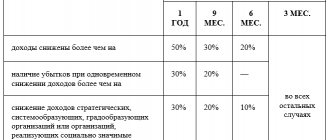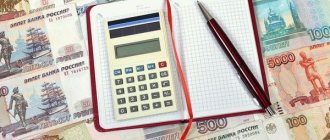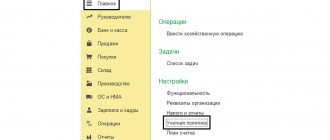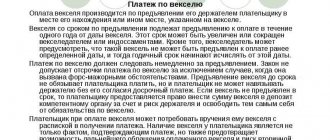Everyone involved in business is familiar with VAT firsthand. The abbreviation stands for value added tax. Of course, for accountants, the process of calculating VAT is usually brought to the point of automation - this is routine work, without which it is difficult to imagine not only the document flow of many companies, but also their financial statements. However, knowledge of the tax burden of a company is necessary not only for financiers: it is good when marketers, managers and executives also understand the basics of taxation, since otherwise it is easy to make the wrong decision.
We will discuss how to calculate VAT in different ways and how VAT payable to the budget is determined. To add a little practice to the theory, let's look at specific examples.
How to calculate VAT from the amount
How to calculate VAT on the amount? It's not difficult: you just need to mathematically calculate the percentage. The calculation is made using the formula:
VAT = NB × Nst / 100,
Where: NB - tax base (that is, the amount without VAT), Nst - VAT rate: 20 percent (until 01/01/2019 - 18) or 10 percent.
ConsultantPlus experts provided examples of VAT calculations for sellers. Get free trial access to the system and proceed to calculations.
What are the tax rates according to the Tax Code?
There are several rates used to transfer VAT to the budget. Before calculating the tax payment, you need to establish what exact rate will be applied.
Since the beginning of 2021, the base or main rate has increased by 2%, and, instead of 18%, it will be equal to 20%. In addition to it, preferential tariffs are applied, which are 0% and 10%. The base rate applies to most transactions. 10% is relevant for some groups of goods that are socially important. Zero percent is applied for export operations, international transport, and for specific work and services.
If fees are not paid on time, sanctions may be applied to the violator. The amount is established by the Tax Code of the Russian Federation and is 20% of the unpaid amount if there are no signs of a violation, or 40% if the violation was committed intentionally. In addition, penalties are transferred, the amount of which depends on the amount and period of delay, the current refinancing rate.
How to calculate VAT including
Calculating VAT as well means highlighting the tax that is included in the final amount. Here the formulas are used for calculation:
VAT = C / 120 × 20 - if you need to calculate VAT 20% (from 01/01/2019),
VAT = C / 118 × 18 - if you need to calculate VAT 18% (until 01/01/2019),
VAT = C / 110 × 10 - if the tax rate is 10%,
Where: C is the amount including VAT.
See also “ What is included in the list of goods subject to VAT at a rate of 10%? »
ATTENTION! This calculation does not mean applying estimated rates of 20/120 (18/118) or 10/110 - it is simply a way to separate the tax from the total.
Read more about settlement rates in this article .
What is the object of taxation
The object of taxation is the sale of goods (or provision of services) and import of products (to the territory of the Russian Federation). According to Article 149 of the Tax Code of the Russian Federation, the following types of activities will not be taxed:
- Funeral services;
- Resale of shares in the management company;
- Provision of preschool education services;
- Nursing;
- Transport services;
- Educational services;
- Babysitting services;
- Elderly care;
- Public utilities;
- Notary and lawyer services;
- Holding public events;
- Activities within the framework of government programs;
- Insurance agent services;
- Maintenance of aircraft and sea vessels.
Sales of the following types of goods are also exempt from VAT:
- Ores that contain precious metals (precisely ores, the sale of precious metals is subject to all kinds of taxes);
- Non-commercial premises;
- Some medications (included in the list of essential goods);
- Religious products.
All other types of activities are subject to mandatory VAT payment.
Different countries have their own taxation systems, so the amount of VAT varies. We present to your attention rates in the most developed countries of the world
Example of VAT calculation
Using the above formulas, we will analyze how to correctly calculate VAT (in excess of the amount, including), using examples.
Example 1
LLC "X" sells a batch of concrete blocks in the amount of 100 thousand pieces. at a price of 55 rub. a piece. The VAT rate is 20% (clause 3 of Article 164 of the Tax Code of the Russian Federation), tax is not included in the price. How to calculate VAT 20% and the final cost of the shipment including tax?
- First, we determine the cost of the batch without VAT (tax base):
55 rub. × 100,000 pcs. = 5,500,000 rub.
- Let's calculate VAT from the amount:
5,500,000 × 20/100 = 1,100,000 rub.
- Let's calculate the amount including VAT:
5,500,000 + 1,100,000 = 6,600,000 rub.
- Or you can determine the total amount immediately, without first calculating the tax:
5,500,000 × 1.20 = 6,600,000 rub.
Accordingly, the following must be indicated in settlement documents and invoices:
- cost without VAT - 5,500,000 rubles,
- VAT 20% - RUB 1,100,000,
- total including VAT - 6,600,000 rubles.
Example 2
According to the price list of X LLC, the price of a curbstone including VAT is 240 rubles. for 1 piece The buyer ordered a batch of 10 thousand pieces. Let's calculate VAT 20%.
- First, let's determine the final cost of the batch:
240 rub. × 10,000 pcs. = 2,400,000 rub.
- We will calculate VAT including:
2,400,000 / 120 × 20 = 400,000 rub.
- The amount remaining excluding VAT:
2,400,000 – 400,000 = 2,000,000 rub.
It can also be found without prior allocation of tax:
2,400,000 / 1.20 = 2,000,000 rub.
You can check the correctness of the calculation by charging VAT on the received value without tax:
2,000,000 × 20/100 = 400,000 rub.
Accordingly, the following must be indicated in settlement documents and invoices:
- cost without VAT - 2,000,000 rubles,
- VAT 20% - 400,000 rubles,
- total including VAT - 2,400,000 rubles.
For information on how to reflect the calculated VAT amount in the VAT return and in accounting, see the Ready-made solution from ConsultantPlus. Get trial access to K+ for free.
Confirmation of accrual and deductions for VAT
Both organizations and individual entrepreneurs must pay VAT to the budget. You can determine the amount to be paid to the budget using formulas; you need to multiply the amount by the tariff.
Only those persons who use OSN can claim a contribution deduction. If the company is exempt from making payments, it is impossible to calculate deductions from the budget.
In what cases can you claim a deduction:
- When exporting products.
- When purchasing Russian products.
- When purchasing goods from foreign suppliers who are not registered in the Russian Federation as payers of contributions.
There are some conditions for accepting a contribution for deduction. Thus, the deduction can be claimed no later than 3 years after the products or work are accepted for registration. Purchased goods must be used for resale. If the deduction relates to imported products, the tax must be paid at Russian customs. Documentation to receive a deduction must be completed in accordance with the rules.
To reimburse the payment, you will need to provide an invoice and a transfer document. Additionally, you will need to complete the primary documentation and check that all fields are filled out correctly.
In some situations, the payer may be denied a deduction. The main reason is incorrect execution of the invoice, lack of a corresponding account in the declaration, lack of sales, transactions were exempt from tax. If a refund is refused, the payer must make deductions or challenge the inspector’s decision in court.
Increasing the tax base
But the least amenable to planning, perhaps, should be recognized as VAT, calculated on amounts that increase the tax base in accordance with paragraph 1 of Art. 162 Tax Code of the Russian Federation . This article establishes a list of situations in which amounts of money received by the seller must be included in the tax base of the tax period in which these amounts were actually received. And although the specific weight of this “item of tax expenses” can hardly be large, I think it still makes sense to dwell on it in detail: there is too much in connection with the application of Art. 162 of the Tax Code of the Russian Federation, questions and disputes arise.
First of all, it is important to remember that the VAT tax base increases by amounts received by the seller only if they are related to payments for goods (work, services) sold, that is, they are actually part of the proceeds received from sales. Let us carefully consider the mentioned list. According to paragraphs. 2 p. 1 art. 162 of the Tax Code of the Russian Federation, the tax base for VAT is increased by the amounts of money received for goods (work, services) sold: in the form of financial assistance; to replenish special purpose funds; to increase income; otherwise related to payment for goods (work, services) sold.








